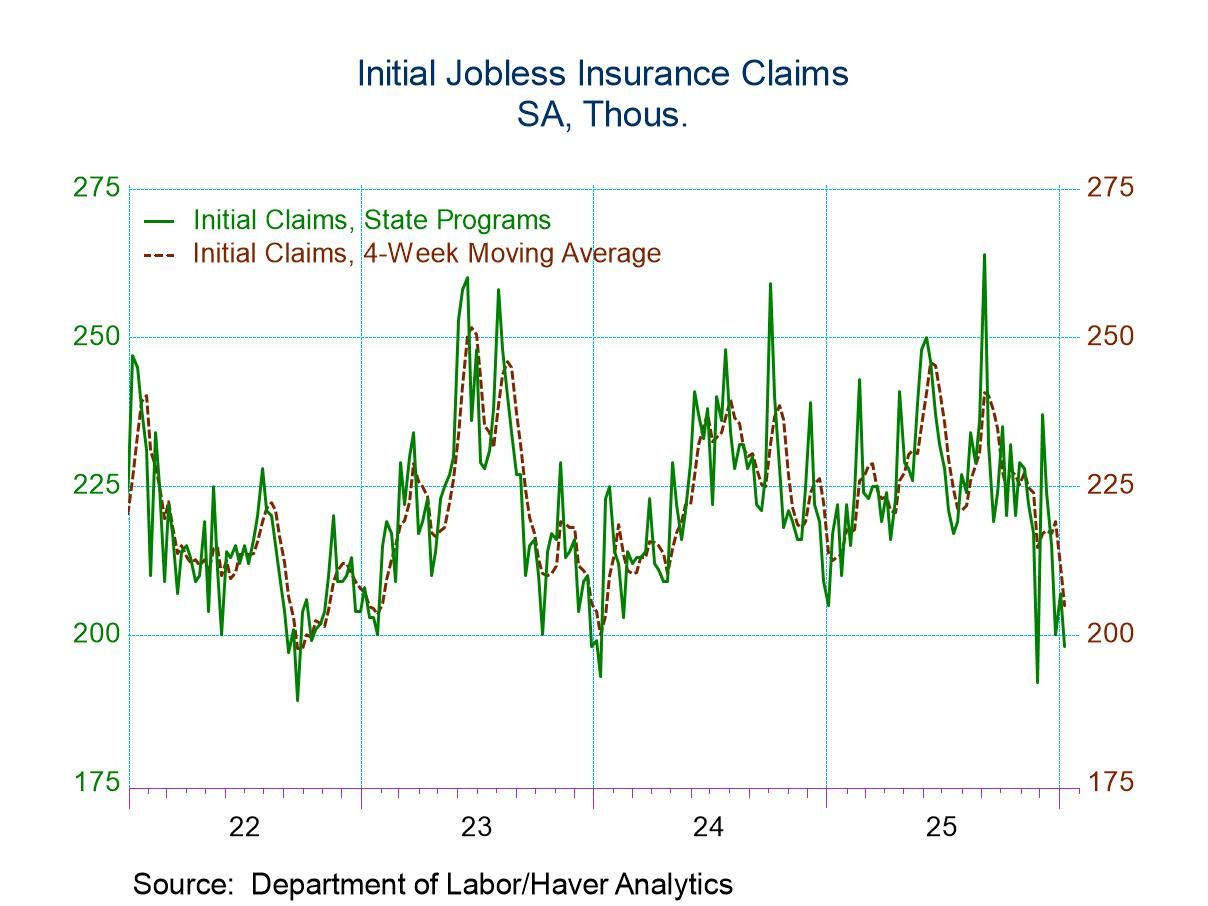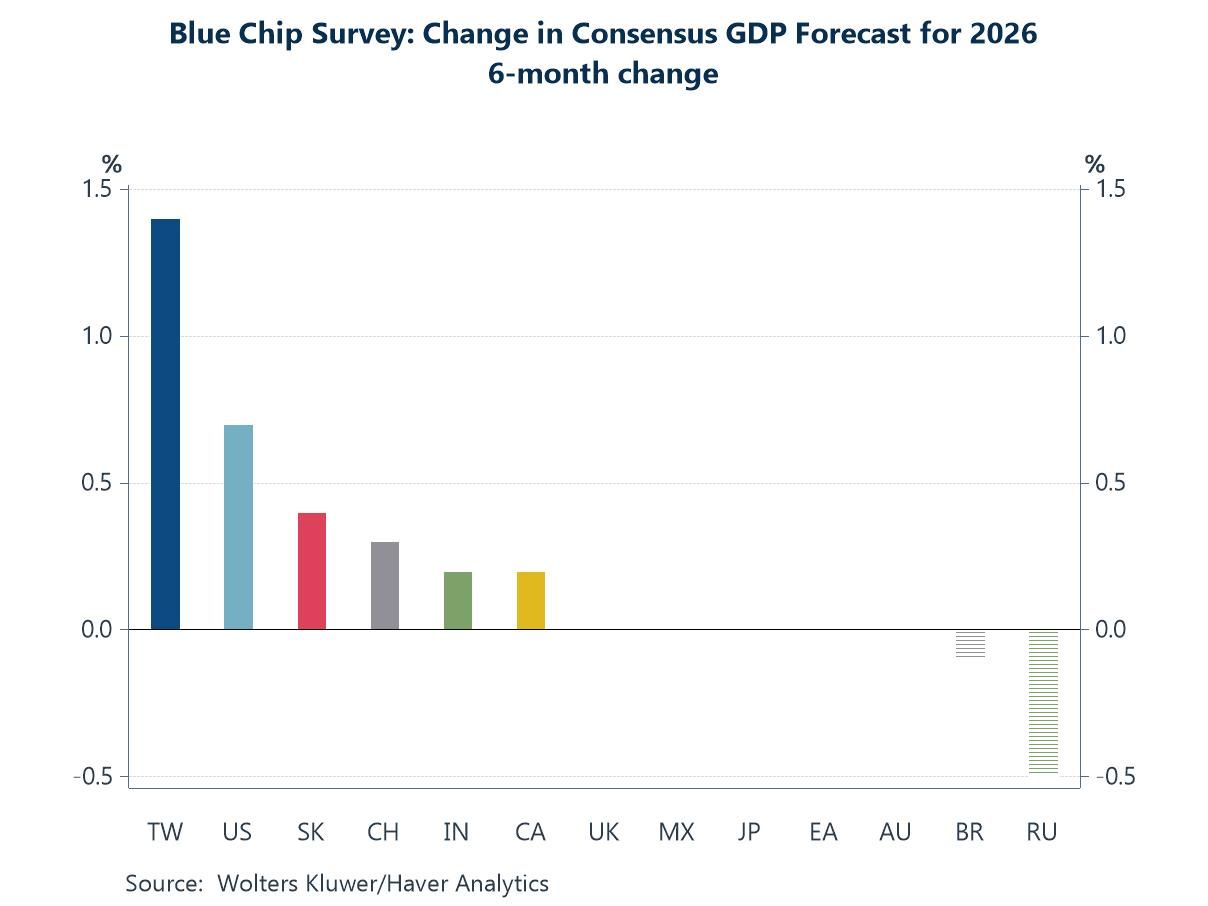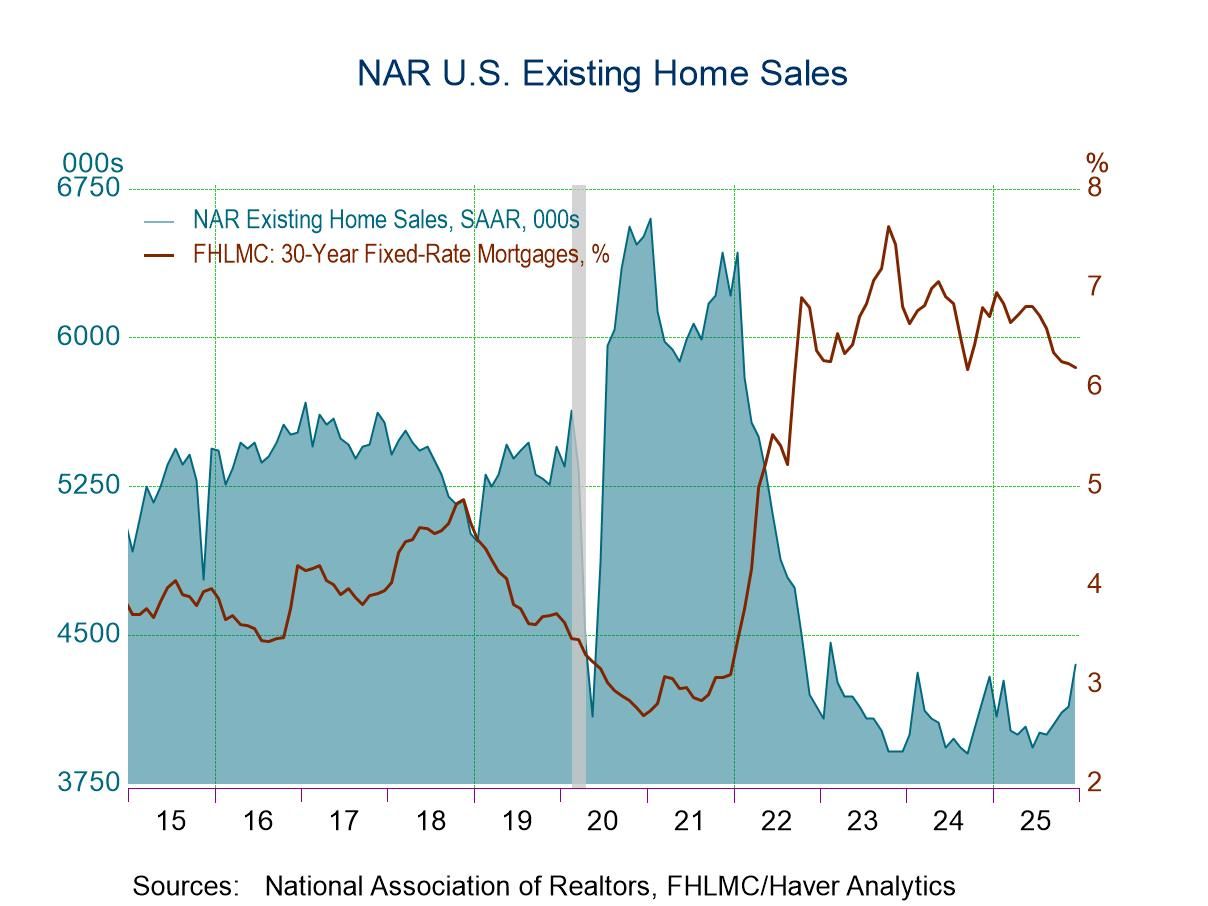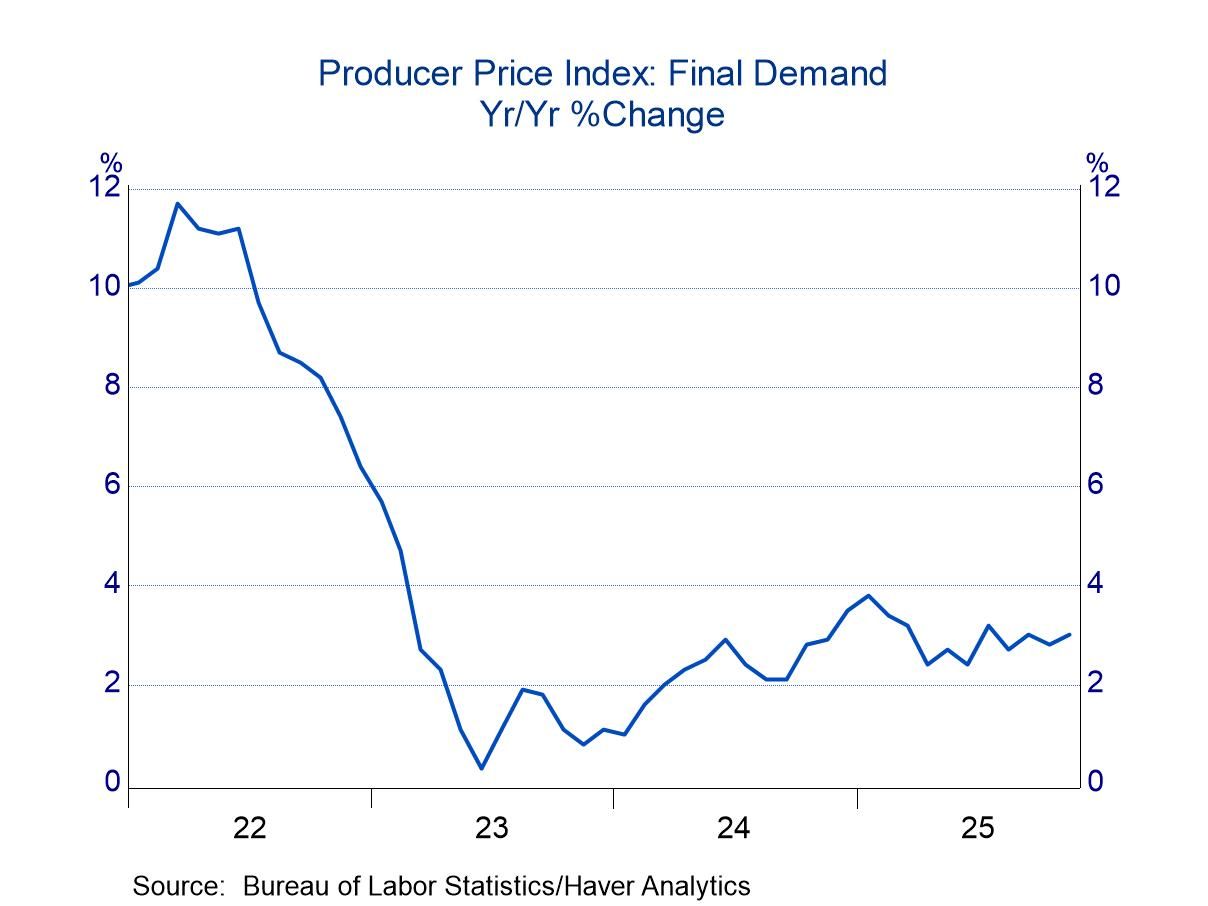 Global| Mar 21 2024
Global| Mar 21 2024Charts of the Week: Up, Down, and Somewhere in Between
by:Andrew Cates
|in:Economy in Brief
Summary
The decisions from several central banks this week have, on the whole, amplified hopes that the world economy remains on course for a soft landing. Equity investors were certainly reassured by the absence of big changes to the Fed's interest rate outlook, despite some concerns following last week’s US inflation surprises. This week’s unexpected decision by the Swiss National Bank (SNB) to cut interest rates by 25bps, in the meantime, chimed with the idea that a global easing cycle has now commenced. In the other direction, moreover, the Bank of Japan’s cautious move toward policy normalization met with a muted financial market response, possibly because it was softened by some dovish communications. In our charts this week we assess some of these financial market reactions (in charts 1 and 2), we review recent global inflation trends (in chart 3), and we then examine China's credit growth (chart 4), and its possible impact on other Asian economies (in chart 5). Finally, we assess 2023's equity market inflows in a selection of major economies, as a prelude to a forthcoming webinar with EPFR.
US interest rate expectations Following this week’s US FOMC meeting, investors are still anticipating roughly three interest rate cuts of 25 basis points by the end of this year (see chart 1). That’s much less than the six such rate cuts that were being priced in mid-January. But it does mean that investors are now more in sync with the Fed’s projections that were published in January and subsequently little-changed at the meeting this week.
Chart 1: Implied expectations for the US Fed Funds rate from futures contracts

The Bank of Japan The key headlines from this week’s BoJ meeting concerned its exit from a negative interest rate policy. But there were nuances. For example, the accompanying decision to exit the so-called Yield Curve Control policy arguably sent a strong signal about the BoJ’s tightening intentions. That said, the yen weakened and government bond yields (JGBs) dipped following these communications (see chart 1). This could reflect the combination of a widely-telegraphed decision in the Japanese media last weekend. Governor Ueda's hint at gradual future rate hikes may have additionally eased investor concerns.
Chart 2: Japan: Long-term interest rate differentials versus the USD/JPY exchange

Inflation in the UK and Canada Inflation watching remains in vogue at present given the importance of these data points for central banks’ decision making. On that score, it was notable this week that much of the incoming inflation data that were published in several major economies surprised expectations to the downside. CPI releases from Canada, the UK and Denmark, for example, all revealed a sharp drop in headline and core inflation (see chart 3). This stands in contrast to last week’s US inflation data, which revealed an uncomfortable message about the trajectory of core inflation and equally surprised the consensus on the upside.
Chart 3: Core CPI inflation in Canada, Denmark and the UK

Emerging market growth surprises Possibly in part because the global inflation and interest rate cycle are turning, incoming data for global growth have taken a turn for the better over the past few weeks. Economic activity in emerging markets, in particular, appears to have improved according to Citigroup’s growth surprise index. Sentix surveys equally suggest that a cyclical improvement is underway in Asia (see chart 4) as well as in Latin America.
Chart 4: Emerging market growth surprises versus the sentix expectations component for Asia

China’s credit growth It is possible too, however, that an improvement in China’s economy could have contributed to these regional and broader emerging market positives. This week’s dataflow from China for industrial production and fixed asset investment certainly registered unexpected improvements in January and February. Haver’s calculations for China’s credit impulse equally suggest that a broader uplift in the domestic economy might now have commenced (see chart 5).
Chart 5: China’s credit impulse versus industrial commodity prices

Equity market flows Notwithstanding disappointing growth over the past few months, China is notable for having attracted large positive equity market inflows in 2023, according to data from EPFR (see chart 6). In fact, Asia, as a whole became a focal point for equity investors last year, with India and Japan also attracting substantial investment. This trend contrasts with several other major economies, including the US, which experienced notable equity market outflows.
Chart 6: Net equity flows for selected major developed and emerging markets in 2023

Sources: EPFR/Haver Analytics
Andrew Cates
AuthorMore in Author Profile »Andy Cates joined Haver Analytics as a Senior Economist in 2020. Andy has more than 25 years of experience forecasting the global economic outlook and in assessing the implications for policy settings and financial markets. He has held various senior positions in London in a number of Investment Banks including as Head of Developed Markets Economics at Nomura and as Chief Eurozone Economist at RBS. These followed a spell of 21 years as Senior International Economist at UBS, 5 of which were spent in Singapore. Prior to his time in financial services Andy was a UK economist at HM Treasury in London holding positions in the domestic forecasting and macroeconomic modelling units. He has a BA in Economics from the University of York and an MSc in Economics and Econometrics from the University of Southampton.






